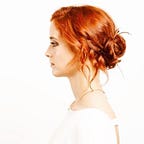When a brand considers virtual reality, the value proposition is not a simple calculation. The audience isn’t quite there — yet. VR isn’t the place to go for reaching the most consumers. It’s increasingly the place many brands go to engage the right consumers. As SPECTACLE executive producer Sam Margolius says, “When you do win [with a virtual reality piece], you can really immerse someone in your brand. The viewer can embrace your brand on the traits that matter. Instead of talking to [the consumer], your voice surrounds them.”
Brands who count innovation and creativity amongst their values have been the vanguard in virtual reality advertising. They’re experimenting, hiring virtual reality creators, and immersing their customers in virtual worlds. Here are three of those brands to watch in VR:
GE
GE partnered with Chris Milk’s VR production company, Here Be Dragons, Mashable, and the Sloan Foundation to produce a five part series about how scientists who achieve the (im)possible through experimentation and research. Available on the app Within, it’s a look behind the closed doors of innovation, and features beautiful animation intercut with interview footage. One episode, “Listening to the Universe,” tells the story of scientists who proved Einstein wrong and listened to black holes colliding in a far corner of the universe.
“When creating ‘Listening to the Universe,’ we knew we wanted to put the user in deep space in a way people haven’t seen before,” said Here Be Dragons co-founder Patrick Milling-Smith. “VR is unique in its ability to make you understand both your place and scale within a scene — which is critical to provide a sense of “being there.” In this case, it allows us to juxtapose the immense distance that gravitational waves travel with the most precise measurement device science has ever developed.”
When asked why VR is the best medium for explaining scientific concepts, Milling-Smith explained, “…just like the subject matter, virtual reality presents the subject (and the world) in three dimensions. When we make content that instructs and educates in the same manner as what would take place in the real world, it’s easier and more natural for audiences to both appreciate and internalize what’s unfolding around them.”
Haagen Dazs
Haagen Dazs teased a new VR piece called “The Extraordinary Honeybee” at the Brand Storytelling conference in Park City, UT. “The Extraordinary Honeybee” will tell the story of the plight of the honeybee from the perspective of a honeybee and will be released this summer. The honeybees, an army of small soldiers in the creation of ice cream ingredients, are imperiled.
“What better way to hear of someone’s plight than walking in their footsteps, or in this case, flying. Haagen-Dazs understands that by entering the bee world at their scale, and hearing their story, humans can relate to the epidemic and hopefully take action,” said Executive Producer Sam Margolius of SPECTACLE. Haagen Dazs draws a line from this immersive POV perspective to our bellies full of ice cream and combines cause with commerce to capture socially conscious consumers.
LEGO
In late November of last year, Lego released a virtual reality game in the Google Daydream app store called “Lego Brickheadz Builder VR.” It’s a free builder game for Lego’s Brickheadz brand, a product line featuring characters like Superman and Wonder Woman. The gameplay is reminiscent of Minecraft, and equally as approachable for young children or non-English speakers. Gameplay features challenges to conquer or free-building opportunities to foster creativity.
The game has various levels to progress through, but it’s less goal-oriented than other games. When considering the UI/UX, especially young children might have trouble with the selector tool. Also, call me a luddite, but imagining a small child of 6 or 7 with a Daydream strapped to her head for hours still feels a little bit dystopian. Well, except perhaps for the early adopter parent, who purchased the Daydream, downloaded Lego’s game, and can now blissfully walk barefoot without fear of a stray Lego.
Overall, rather than risk narrative complexity Lego chose to replicate its core functionality, but in virtual reality: play. While it doesn’t provide a compelling answer to the question, “why is virtual reality the right medium for this game?”, it does provide at least a few hours of fun. It’s a safe and sure step, and a great free option for children in the Daydream store.
Brands that choose to work in virtual reality are brands that see the value in full immersion and access to consumers who seek new experiences. While experimentation in virtual reality has a limited audience reach at this time, these early stage VR plays ensure that the audience is fully immersed in the brand. From the time a user dons a VR headset and dives in until the time they emerge from a virtual world, you have the viewer’s undivided attention.
